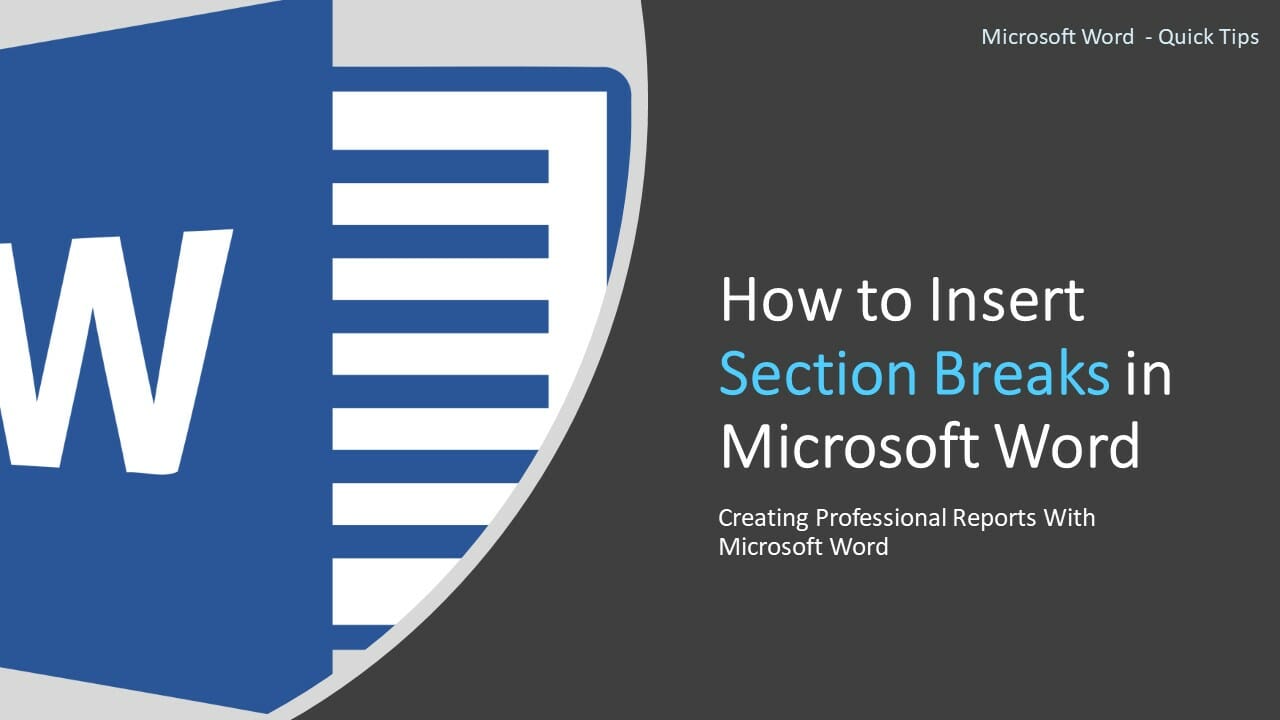
- #How to get rid of section break continuous in word manual
- #How to get rid of section break continuous in word free
How difficult depends on both the source material and the OCR software. OCR produces documents that are extremely difficult to edit, as you are discovering. The "trick" is to copy to a new document, pasting as plain text. If you happen to know some trick to work around this problem, please do share it with me. I'm just out of resources in this case, that's why I came here and tried to find some help.
#How to get rid of section break continuous in word manual
In most cases, cleaning that up will be a manual task." - yeah, and that's EXACTLY what I'm doing, trying to do it MANUALLY, of course, I'm not lazy, Worlds of difference.Īs to "With scanned documents, you usually get a lot of superfluous section breaks and text boxes. Therefore, I don't see how "they do not affect text flow in a more dramatic way than manual page breaks do".
#How to get rid of section break continuous in word free
But unlike when after a page break, where when I go in the first left-hand cell of the first column, and hit Enter, the entire table comes down, leavingġ line free above it, letting me write/paste something on that line, with section breaks instead of page breaks before the table, when I hit enter in said first cell, it just moves the text in the cell itself, so it leaves me with no free line there above Is that, at the beginning of each page, I have to put my text there, right above the tables, simple text. They're all coming after section breaks (for, really, no valid reason, it's just FineReader that decided to put section breaks there, instead of page breaks). I'm trying to make the text as processable as possible.įor instance, there are many tables FR put right in the beginning of single pages. If orientation is the only thing that you lose here, the easiest solution is to leave the section break and just change the orientation for the affected section.įor all the details of section formatting in Word, see replies earlier in this thread and/or take a look at When deleting a section break, you will always lose some section-level formatting, because that formatting is stored in the section break. Now, I don't want all pages above to become Landscape pages, nor all pages below to become Portrait pages, I wanna keep the formatting AS IT IS, but without the disgusting section break, replace it with a page break. Replace it by a simple Page break.Įxample: I have a Portrait page ending with a section break (I didn't put it there, of course, it came after OCR and export to Word)., followed by a Landscape page. Nothing of the above does what I want to achieve: REMOVE THE NASTY SECTION BREAK WITHOUT changing ANYTHING else. That's a horrible description, but hopefully it will help someone.

"Page Setup" and it looks like a bracket with an arrow pointing down and to the right (not a bracket on the keyboard, but the kind you use for construction). You have to click on the tiny button on the lower right side of the section, it's to the right of the words

On the Page Layout tab in the ribbon, there's a section called Page Setup. This worked for me once I found the Page Setup. You can then safely delete the section break as per: This will copy the formatting from the area above the section break, to the area below the section break. Now, click just after the section break and press F4. Then click onĮach of the three tabs (don't change any settings) then click OK. To do so, select an area just above the section break, then click File > Page Setup (or File->Print->Page Setup in Word 2010). Last.DeleteĪctually, you CAN do what the OP is asking. FormattedText = Sctn1.Headers(oHdFt.Index).Range.FormattedText OHdFt.LinkToPrevious = Sctn1.Headers(oHdFt.Index).LinkToPrevious FormattedText = Sctn1.Footers(oHdFt.Index).Range.FormattedTextĭo While.

OHdFt.LinkToPrevious = Sctn1.Footers(oHdFt.Index).LinkToPrevious

DifferentFirstPageHeaderFooter = lDiffFirstHdFt OddAndEvenPagesHeaderFooter = lOddEvenHdFt MsgBox "Selection does not span a Section break", vbExclamation Page orientation, text columns, headers & footers) are addressed.ĭim sPageHght As Single, sPageWdth As Singleĭim sHeaderDist As Single, sFooterDist As Singleĭim sTMargin As Single, sBMargin As Singleĭim sLMargin As Single, sRMargin As Singleĭim sGutter As Single, sGutterPos As Singleĭim lPaperSize As Long, lGutterStyle As Longĭim lMirrorMargins As Long, lVerticalAlignment As Longĭim lOddEvenHdFt As Long, lDiffFirstHdFt As Longĭim bTwoPagesOnOne As Boolean, bBkFldPrnt As Booleanĭim bBkFldPrnShts As Boolean, bBkFldRevPrnt As Booleanĭim bOrientation As Boolean, oHdFt As HeaderFooter The following macro works the other way, across multiple (selected) Section breaks. As has been discussed, deleting a Section break causes the Section preceding the break to assume the page layout of the following Section.


 0 kommentar(er)
0 kommentar(er)
